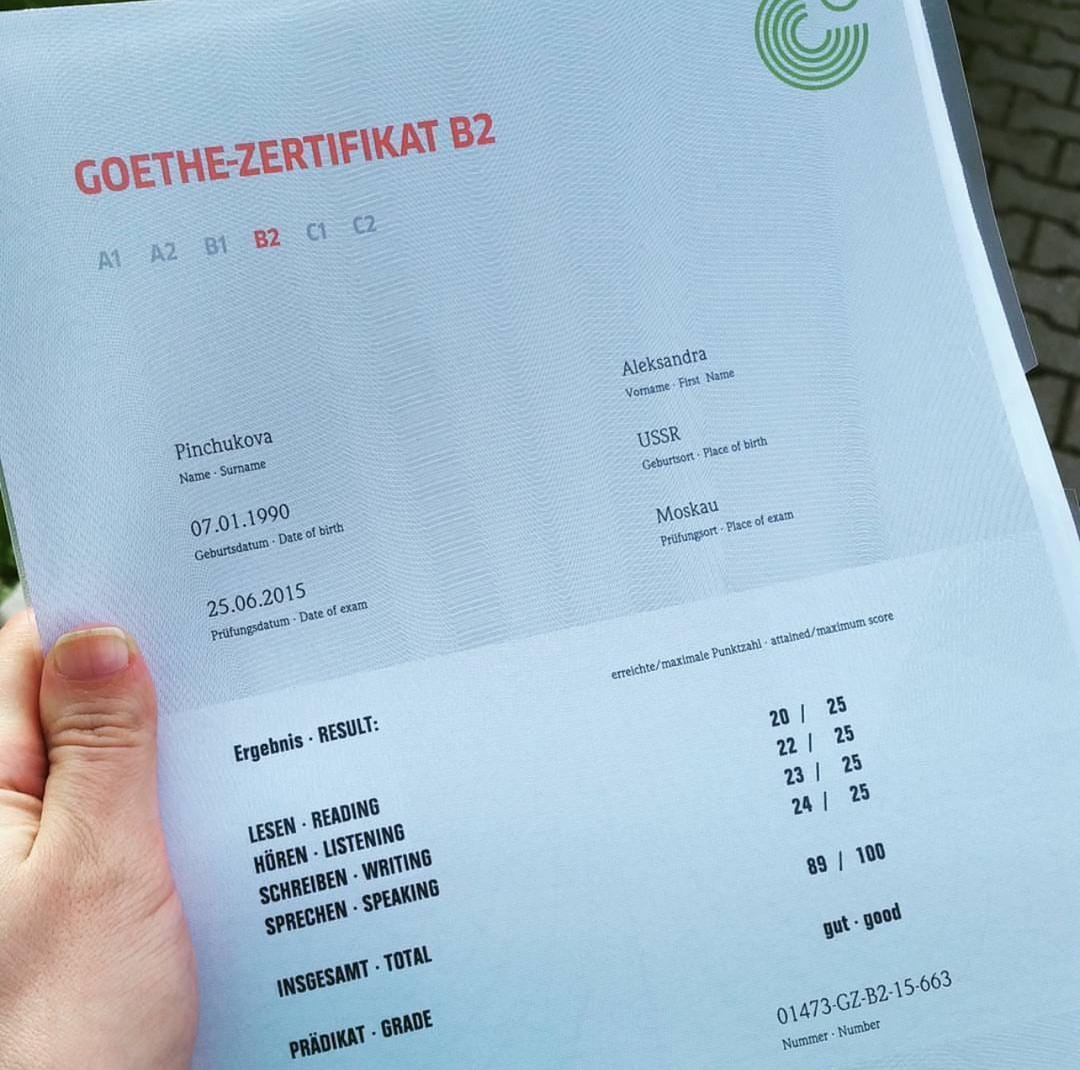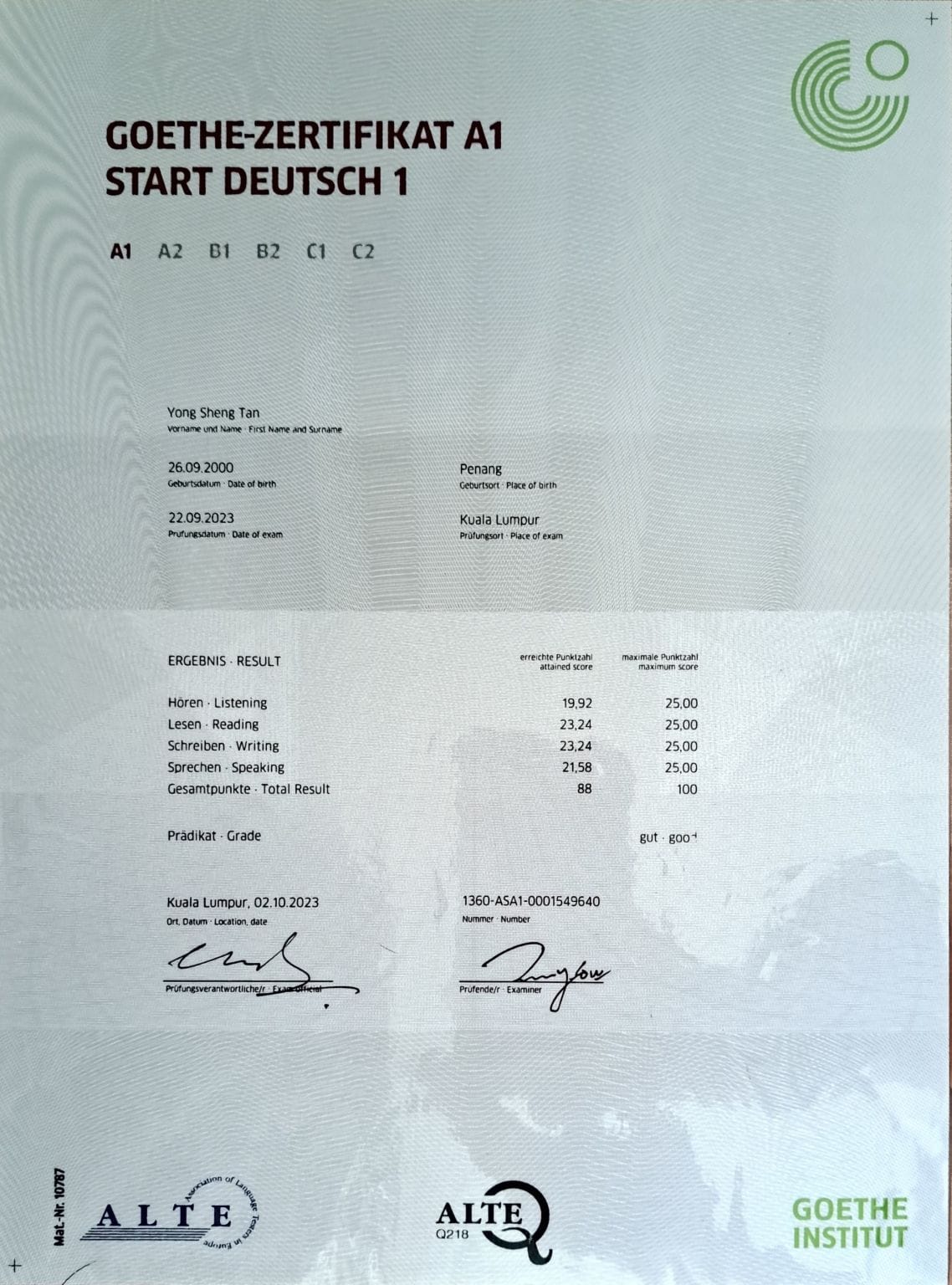The Full Guide To Ösd Exam
페이지 정보

본문
Comprehending the ÖSD Exam: A Gateway to Proficiency in German
The ÖSD (Österreichisches Sprachdiplom Deutsch) exam is a standardized language proficiency test created to evaluate and accredit German language skills. Recognized internationally, the ÖSD exam deals with various students, varying from newbies to innovative speakers. This article intends to offer a useful introduction of the ÖSD exam, detailing its structure, levels, preparation methods, and frequently asked concerns.
 The Importance of the ÖSD Exam
The Importance of the ÖSD Exam
In a globalized world where efficiency in several languages is extremely valued, the ÖSD exam serves a number of essential purposes:
 Accreditation of Language Proficiency: The ÖSD exam provides certificates that are recognized in Austria and other German-speaking nations, assisting in job opportunity and university admissions.
Accreditation of Language Proficiency: The ÖSD exam provides certificates that are recognized in Austria and other German-speaking nations, assisting in job opportunity and university admissions.
Standardized Assessment: The exam provides a standardized evaluation of language abilities, which can be useful for scholastic and professional purposes.
Structured Learning Path: The ÖSD uses a clear structure for language students, guiding them toward achieving particular language objectives through a structured curriculum.
Structure of the ÖSD Exam
The ÖSD exam is divided into numerous levels aligned with the Common European Framework of Reference for Languages (CEFR). Each level tests 4 crucial language skills: listening, reading, composing, and speaking.
Levels of the ÖSD Exam
The ÖSD provides examinations at six levels, Osd Zertifikat Validierung corresponding to the CEFR framework:
A1: Beginner
A2: Elementary
B1: Intermediate
ÖSD-Zertifikat B2: Upper Intermediate
C1: Advanced
ÖSD-Zertifikat C2: Proficiency
Each level has particular requirements and expectations, allowing prospects to concentrate on appropriate products and practices based on their proficiency.
Exam Components
The ÖSD exam is divided into four unique components:
Listening Comprehension: Candidates listen to different audio materials (conversations, interviews, and discussions) and respond to understanding questions.
Checking out Comprehension: This area includes texts of differing lengths and complexities, accompanied by questions that assess understanding and interpretation.
Writing: Candidates are needed to produce written texts (letters, essays, or reports) depending upon the level, demonstrating their ability to communicate details and arguments effectively.
Speaking: The speaking part typically includes a conversation with an examiner, needing candidates to demonstrate fluency, pronunciation, and grammatical precision.
Preparation for the ÖSD Exam
Getting ready for the ÖSD exam needs a tactical approach, integrating various study methods and resources. Here are some efficient methods:
Research study Methods
Enlist in a Language Course: Structured courses can offer guidance and a methodical approach to language knowing.
Practice with Sample Tests: Using official ÖSD sample materials can acquaint prospects with the exam format and question types.
Join a Study Group: Collaborating with peers can boost discovering through shared understanding and accountability.
Usage Language Learning Apps: Mobile applications can support language acquisition, providing vocabulary practice and interactive workouts.
Resources
Books and Workbooks: Choose materials that line up with the target level of the ÖSD exam.
Online Platforms: Websites dedicated to language knowing often supply free resources, consisting of grammar exercises and vocabulary lists.
Tutoring: Personal guideline from skilled teachers can provide tailored feedback and targeted practice.
Tips for Success
Set Realistic Goals: Break down the preparation procedure into workable turning points.
Engage with Native Speakers: Regular interaction with native German speakers can enhance conversational abilities and cultural understanding.
Immerse Yourself in the Language: Consume German-language media-- such as movies, podcasts, and books-- to enhance listening and reading abilities.
Practice Regularly: Consistency is type in language learning; designate time each day for practice throughout all four abilities.
Regularly Asked Questions (FAQs).
1. What are the primary differences in between the ÖSD exam and other German language tests?
The ÖSD exam specifically focuses on modern German use and culture, offering an unique point of view compared to other tests, such as the TestDaF or the Goethe-Osd zertifikat validierung. Each assessment has various structures, levels, and focus on various abilities, accommodating specific needs and target market.
2. The length of time does it take to get ready for the ÖSD exam?
Preparation time varies significantly based upon the prospect's existing language abilities. Generally, it can take anywhere from a couple of months to over a year of devoted research study to get ready for each level.
3. Exists an age limitation to take the ÖSD exam?
No, there is no age limit for candidates wishing to take the ÖSD exam. Individuals of any ages, from children to adults, are encouraged to get involved based on their language efficiency and objectives.
4. Where can I take the ÖSD exam?
ÖSD examinations are administered at different authorized examination centers worldwide. Prospects can check out the official ÖSD site to discover a center near them and to inspect available dates.
5. How are ÖSD exam results scored?
Candidates get a rating for each element of the exam, which is then integrated to offer a total efficiency level. Results are normally available a few weeks post-examination.
Conclusion.
The ÖSD exam is a highly regarded language proficiency test that acts as a vital tool for people seeking to demonstrate and license their German language skills. Through efficient preparation, structured learning, and access to the ideal resources, prospects can attain their desired proficiency level, improving their chances in both scholastic and professional domains.
The ÖSD (Österreichisches Sprachdiplom Deutsch) exam is a standardized language proficiency test created to evaluate and accredit German language skills. Recognized internationally, the ÖSD exam deals with various students, varying from newbies to innovative speakers. This article intends to offer a useful introduction of the ÖSD exam, detailing its structure, levels, preparation methods, and frequently asked concerns.
 The Importance of the ÖSD Exam
The Importance of the ÖSD ExamIn a globalized world where efficiency in several languages is extremely valued, the ÖSD exam serves a number of essential purposes:
 Accreditation of Language Proficiency: The ÖSD exam provides certificates that are recognized in Austria and other German-speaking nations, assisting in job opportunity and university admissions.
Accreditation of Language Proficiency: The ÖSD exam provides certificates that are recognized in Austria and other German-speaking nations, assisting in job opportunity and university admissions.Standardized Assessment: The exam provides a standardized evaluation of language abilities, which can be useful for scholastic and professional purposes.
Structured Learning Path: The ÖSD uses a clear structure for language students, guiding them toward achieving particular language objectives through a structured curriculum.
Structure of the ÖSD Exam
The ÖSD exam is divided into numerous levels aligned with the Common European Framework of Reference for Languages (CEFR). Each level tests 4 crucial language skills: listening, reading, composing, and speaking.
Levels of the ÖSD Exam
The ÖSD provides examinations at six levels, Osd Zertifikat Validierung corresponding to the CEFR framework:
A1: Beginner
A2: Elementary
B1: Intermediate
ÖSD-Zertifikat B2: Upper Intermediate
C1: Advanced
ÖSD-Zertifikat C2: Proficiency
Each level has particular requirements and expectations, allowing prospects to concentrate on appropriate products and practices based on their proficiency.
Exam Components
The ÖSD exam is divided into four unique components:
Listening Comprehension: Candidates listen to different audio materials (conversations, interviews, and discussions) and respond to understanding questions.
Checking out Comprehension: This area includes texts of differing lengths and complexities, accompanied by questions that assess understanding and interpretation.
Writing: Candidates are needed to produce written texts (letters, essays, or reports) depending upon the level, demonstrating their ability to communicate details and arguments effectively.
Speaking: The speaking part typically includes a conversation with an examiner, needing candidates to demonstrate fluency, pronunciation, and grammatical precision.
Preparation for the ÖSD Exam
Getting ready for the ÖSD exam needs a tactical approach, integrating various study methods and resources. Here are some efficient methods:
Research study Methods
Enlist in a Language Course: Structured courses can offer guidance and a methodical approach to language knowing.
Practice with Sample Tests: Using official ÖSD sample materials can acquaint prospects with the exam format and question types.
Join a Study Group: Collaborating with peers can boost discovering through shared understanding and accountability.
Usage Language Learning Apps: Mobile applications can support language acquisition, providing vocabulary practice and interactive workouts.
Resources
Books and Workbooks: Choose materials that line up with the target level of the ÖSD exam.
Online Platforms: Websites dedicated to language knowing often supply free resources, consisting of grammar exercises and vocabulary lists.
Tutoring: Personal guideline from skilled teachers can provide tailored feedback and targeted practice.
Tips for Success
Set Realistic Goals: Break down the preparation procedure into workable turning points.
Engage with Native Speakers: Regular interaction with native German speakers can enhance conversational abilities and cultural understanding.
Immerse Yourself in the Language: Consume German-language media-- such as movies, podcasts, and books-- to enhance listening and reading abilities.
Practice Regularly: Consistency is type in language learning; designate time each day for practice throughout all four abilities.
Regularly Asked Questions (FAQs).
1. What are the primary differences in between the ÖSD exam and other German language tests?
The ÖSD exam specifically focuses on modern German use and culture, offering an unique point of view compared to other tests, such as the TestDaF or the Goethe-Osd zertifikat validierung. Each assessment has various structures, levels, and focus on various abilities, accommodating specific needs and target market.
2. The length of time does it take to get ready for the ÖSD exam?
Preparation time varies significantly based upon the prospect's existing language abilities. Generally, it can take anywhere from a couple of months to over a year of devoted research study to get ready for each level.
3. Exists an age limitation to take the ÖSD exam?
No, there is no age limit for candidates wishing to take the ÖSD exam. Individuals of any ages, from children to adults, are encouraged to get involved based on their language efficiency and objectives.
4. Where can I take the ÖSD exam?
ÖSD examinations are administered at different authorized examination centers worldwide. Prospects can check out the official ÖSD site to discover a center near them and to inspect available dates.
5. How are ÖSD exam results scored?
Candidates get a rating for each element of the exam, which is then integrated to offer a total efficiency level. Results are normally available a few weeks post-examination.
Conclusion.
The ÖSD exam is a highly regarded language proficiency test that acts as a vital tool for people seeking to demonstrate and license their German language skills. Through efficient preparation, structured learning, and access to the ideal resources, prospects can attain their desired proficiency level, improving their chances in both scholastic and professional domains.
- 이전글How Do You Know If You're In The Right Place For German Exam ÖSD 25.03.04
- 다음글15 Things You're Not Sure Of About OSD Exam Schedule 25.03.04
댓글목록
등록된 댓글이 없습니다.


